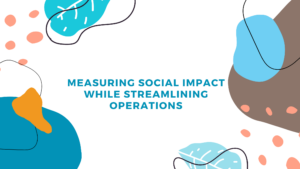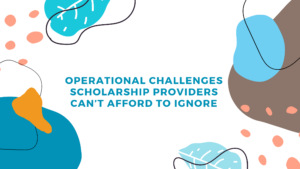
Measuring Social Impact While Streamlining Operations
Schedule a Demo View Interactive Tour A Deep Dive into How Brands and Foundations Can Power Purpose-Driven, Data-Backed Scholarship and Grant Programs
When you are in charge of awards, grants, scholarships, competitions, a call for entry program, and fellowships, you’ve got a number of challenges facing you, not the least of which is the fact that you don’t seem to get the number of applications you believe you should (or someone else believes you should). What could be keeping people from applying? Is it something you said? Here is how you can create a better online submission process.
Here are a couple of challenges related to collecting award, grant, and scholarship submissions:
Reviewr has years of award, grant, scholarship, and competition experience under its belt, and we love sharing what we’ve learned. We’ll help you isolate a few of these application management issues and get your arms—and your mind—around them.
Much of this advice works whether or not you have digital support, such as online submission management software like Reviewr. We’ll be the first to tell you digital support for application submission and management is the better way to go, but it really all comes down to a fundamental process you can streamline, no matter what tools you use.
Although many details go into the creation of an online submission process, there are few sweet spots that provide opportunities for streamlining and efficiencies. This usually means less frustration, less time spent, and better accuracy—for both the submitter and your team.
Here are of few of those sweet spots offering opportunities for efficiency and effectiveness of your online application submission process:
Application Instructions
It’s critical to provide clear, concise and actionable instructions on the application form for your applicants, so they understand exactly what to do and when they must do it by. The instruction portion of your online application form is where you set expectations and clarify deadlines, so you don’t lose applicants due to misunderstandings.
Think creatively. What do your applicants need to know to make the process easy for them? Maybe you could provide instructions for working offline, so they can work on questions on their own time and then come back to fill in their answers. Here’s an idea: Provide a download of the questions, so it’s easy to take them out of the system to work on.
Submission Form
The form itself is the heart of the online application submission process. As such, it’s also your best opportunity to make things easy for applicants and ensure their submissions goes through.
One of the biggest bumps in the application submission process is the uploading of information. To reduce the loss of submissions:
People generally are becoming increasingly savvy about online technology, and they are likely to easily adapt to any upload/submit options you can provide to save time and confusion. Don’t forget some of the basics of application submission: avoid asking for personal information you don’t really need, such as Social Security numbers, and delete “filler” questions that do little for the applicant’s case and just add to length of the application process.
Finally, offer applicants one last review before making their submission and leaving the online application system.
Even your deadline can influence the retention or loss of an applicant. Schedule the deadline for a day and time when support is available by phone or online. Avoid the temptation to use midnight as a deadline, as we all did in the past. You and your team are not likely to be available at midnight, and you know how applicants are—they push their submission to the very last minute to make sure they’ve done everything they can to make their case.
Process Visibility
The third sweet spot in online application process is ongoing communication between your staff and each applicant. If you can proactively notify each applicant of the status of their application as it goes through the process, it can cut down on incoming calls, as well as help build a positive reputation for your program and staff as being efficient and easy to work with.
Ongoing process communications might include notifications that a submission has been received and accepted or denied or remains in review. Once an application has been evaluated by your team of reviewers, it’s important for the reputation of your program to provide clear, comprehensive and constructive results and feedback. Applicants appreciate not only receiving objective feedback, such as scores and tallies, but also subjective comments from judges or reviewers. Sometimes it is these comments that provide the most helpful information for applicants, so they can do better next time.
Digital Efficiency
Although application management systems do exist without digital tools, the capabilities of a digital application/submission management system can help reviewing bodies save time, money and headaches. Yes, it’s possible to gain efficiencies by moving your submissions to Dropbox and email as opposed to snail mail, but the exponential benefits of online application management systems are many. Online submission management softwares allow:
See what the American Society of Association Executives says about using tools like Reviewr. “Associations that focus on leveraging data, improving processes, and investing in new technologies, the hard work will likely pay off in more engaged and satisfied members”.
Sure, you can use online form builders as a means to collect online submissions, but is that really the right tool for the job?
Reviewr has built specific tools for award, grant, and scholarship management with the proven recipes and workflows necessary for your programs success. By using dedicated tools for the task at hand you can not only free up valuable administrative time that can be better allocated to other key activities, but also provide the digital experience and engagement that your audience desires.

Schedule a Demo View Interactive Tour A Deep Dive into How Brands and Foundations Can Power Purpose-Driven, Data-Backed Scholarship and Grant Programs

Schedule a Demo View Interactive Tour Insights from 500 scholarship provider interviews Bridging the Gap Between Mission and Execution Scholarship programs
